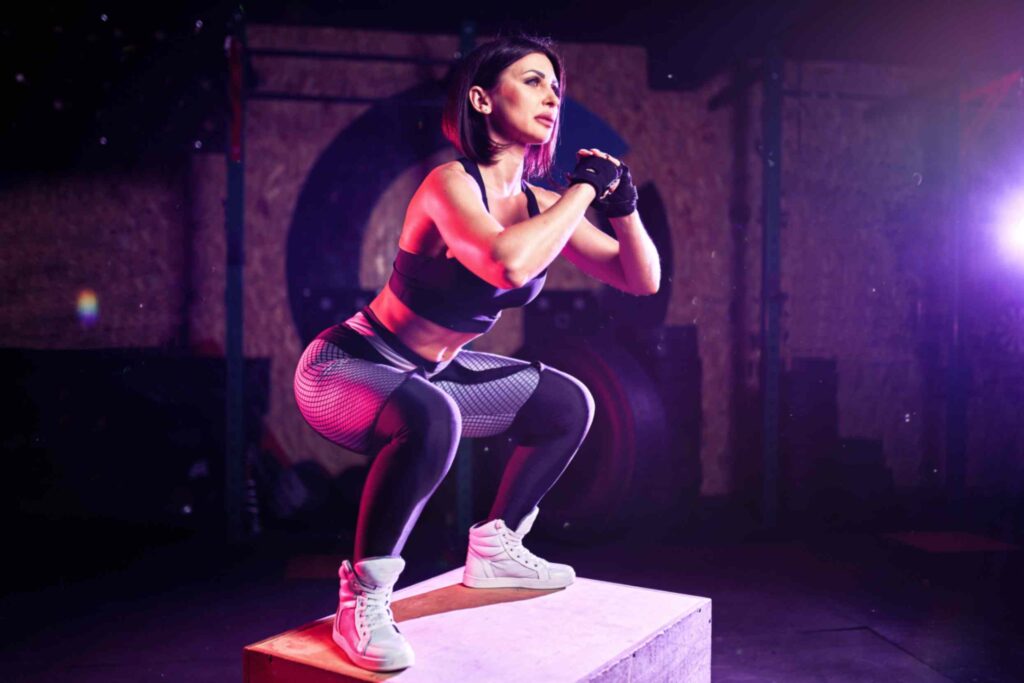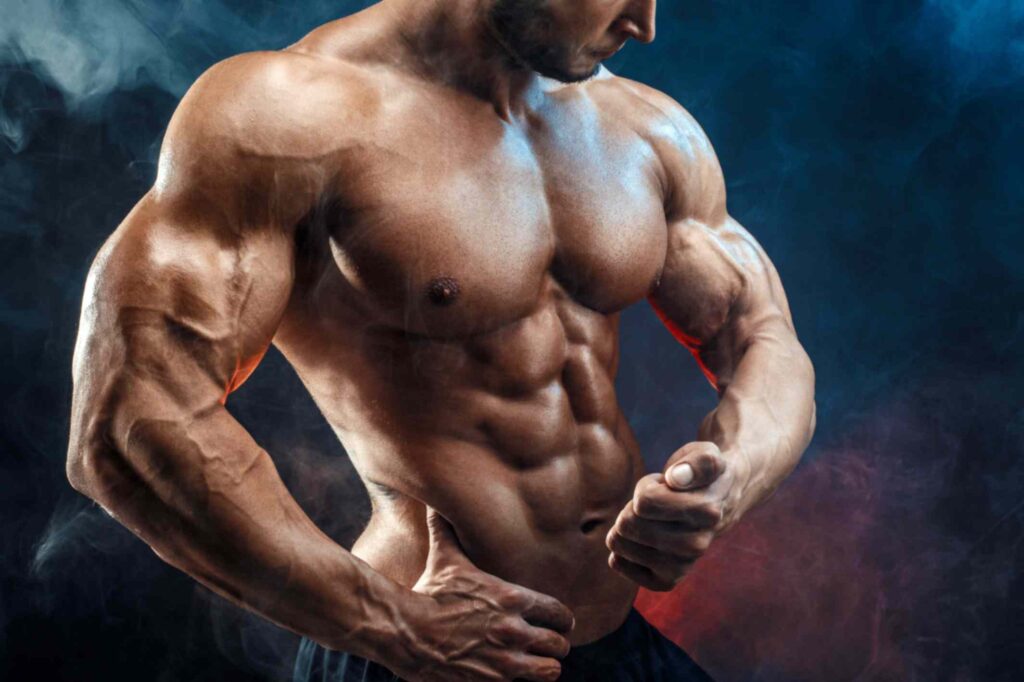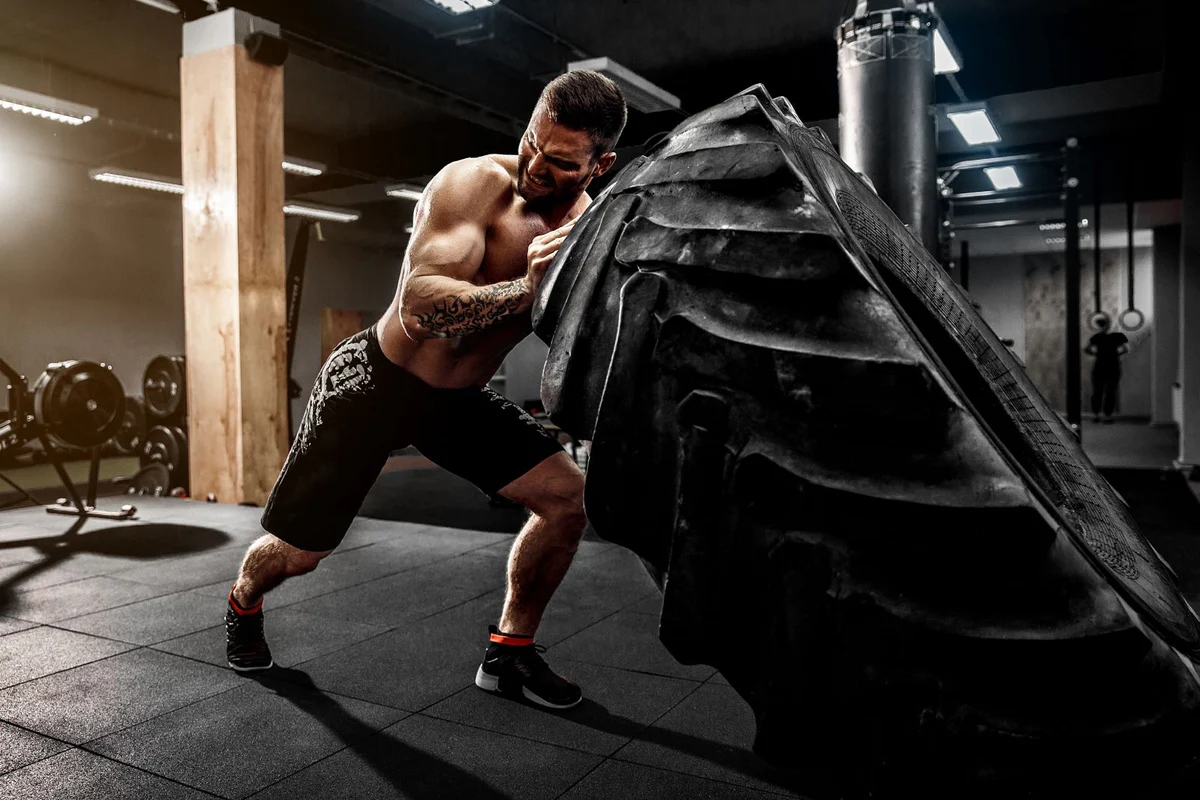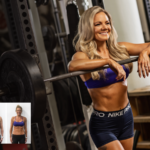Introduction
Bodybuilding is more than just lifting weights and flexing muscles; it’s a lifestyle, a discipline, and a journey towards building the best version of oneself. In this comprehensive guide, we will delve into every aspect of bodybuilding, from the importance of diet and workout routines to debunking common myths and understanding the role of sleep and stress in muscle growth. Additionally, we’ll explore the key differences between male and female bodybuilding, shedding light on the unique challenges and opportunities each gender faces in pursuit of their bodybuilding goals.
The Fundamentals of Bodybuilding
1.1 What is Bodybuilding?
Bodybuilding is a physical fitness activity and sport that focuses on the development and sculpting of one’s musculature through a combination of resistance training, cardiovascular exercise, and a strict dietary regimen. It involves systematically training and conditioning the muscles to increase their size, strength, and definition while simultaneously reducing body fat to showcase the muscular physique.
1.2 The Importance of Setting Goals
Before embarking on a bodybuilding journey, it’s crucial to establish clear and achievable goals. Whether it’s gaining muscle mass, losing body fat, or sculpting a specific physique, having a target will guide your training and nutrition.
1.3 The History of Bodybuilding
The history of bodybuilding is a fascinating journey that has evolved over centuries, reflecting changing societal ideals, health awareness, and physical culture.
Understanding the origins of bodybuilding helps us appreciate its evolution and significance in modern fitness culture. Explore the history of bodybuilding from its beginnings to the present day.
1.4 The Mental Aspect of Bodybuilding
Bodybuilding is not just a physical endeavor; it’s a mental one as well. Discover the psychological aspects of bodybuilding, including motivation, discipline, and overcoming challenges.
The Bodybuilding Diet
The bodybuilding diet is a structured and highly specialized eating plan designed to support the goals of bodybuilders, which typically include building muscle, reducing body fat, and optimizing performance. This diet emphasizes specific macronutrient ratios, calorie intake, and meal timing to achieve these objectives. Here are the key components of a bodybuilding diet:
2.1. Macronutrient Ratios:
Protein: Protein is essential for muscle repair and growth. Bodybuilders typically consume higher amounts of protein to ensure they have sufficient amino acids for muscle recovery and development. Common protein sources include lean meats (chicken, turkey, lean beef), fish, eggs, dairy (Greek yogurt, cottage cheese), and plant-based options like tofu, tempeh, and legumes.
Carbohydrates: Carbohydrates provide the body with energy for workouts and support glycogen storage in muscles. They are a crucial component of a bodybuilder’s diet, especially for maintaining strength and endurance during training. Complex carbohydrates such as whole grains (brown rice, quinoa, oats), starchy vegetables (sweet potatoes, corn), and legumes are preferred.
Fats: Healthy fats are important for overall health and hormone production. They are also a source of concentrated calories for those looking to gain weight. Sources of healthy fats include avocados, nuts, seeds, olive oil, and fatty fish like salmon.
2.2. Caloric Intake:
Caloric intake is tailored to an individual’s goals. To build muscle, bodybuilders often consume a caloric surplus, meaning they eat more calories than they burn. Conversely, to reduce body fat and achieve a leaner physique, they consume a caloric deficit by burning more calories than they consume.
2.3. Meal Timing:
Meal timing plays a role in optimizing muscle growth and recovery:
Pre-Workout Nutrition: A balanced meal or snack 1-2 hours before a workout provides energy and helps prevent muscle breakdown during exercise. This meal typically includes carbohydrates and protein.
Post-Workout Nutrition: After a workout, it’s important to consume a meal or shake containing protein and carbohydrates to facilitate muscle recovery and replenish glycogen stores.
Meal Frequency: Bodybuilders often eat multiple small meals throughout the day (usually 5-7 meals) to maintain a steady supply of nutrients and support metabolism. This can also help control hunger and maintain energy levels.
2.4. Supplements:
Supplementation plays a significant role in bodybuilding, as it can complement a well-structured diet and training regimen. While supplements should not replace whole foods, they can provide specific benefits that support the goals of bodybuilders. Here are some key reasons why supplementation is important in bodybuilding:
Convenience and Efficiency: Supplements are a convenient way to ensure that bodybuilders meet their nutritional needs, especially when they have busy lifestyles or struggle to consume enough calories or protein through whole foods alone.
Muscle Recovery and Growth: Several supplements, such as protein powders (whey and casein), are rich sources of amino acids, which are the building blocks of muscle tissue. Consuming protein supplements post-workout can expedite muscle recovery and stimulate muscle protein synthesis, aiding in muscle growth.
Amino Acid Supplementation: Branched-chain amino acids (BCAAs) and essential amino acids (EAAs) supplements can be beneficial, particularly during periods of caloric restriction or intense training. They can help prevent muscle breakdown and reduce muscle soreness.
Creatine: Creatine is one of the most researched and effective supplements for improving strength and power in resistance training. It enhances muscle creatine phosphate stores, allowing for greater energy production during high-intensity exercises.
Pre-Workout Supplements: Pre-workout supplements often contain ingredients like caffeine, beta-alanine, and nitric oxide boosters. These can increase energy levels, improve focus, delay muscle fatigue, and enhance workout performance.
Vitamins and Minerals: While a well-balanced diet should provide essential vitamins and minerals, some bodybuilders opt for multivitamin supplements to ensure they meet their daily requirements, especially during periods of calorie restriction.
Joint Health: Glucosamine and chondroitin supplements are popular among bodybuilders to support joint health and reduce the risk of injuries, which can be common due to heavy lifting and intense training.
Fat Loss and Thermogenics: Some supplements, such as caffeine, green tea extract, and thermogenic blends, can help increase metabolism and promote fat loss when used in conjunction with a balanced diet and regular exercise.
Weight Gain: Weight gain supplements, such as weight gainers and meal replacement shakes, can be useful for bodybuilders looking to increase calorie intake and gain weight in a controlled manner.
Specialised Supplements: Depending on individual goals and needs, bodybuilders may use specialised supplements such as glutamine (for immune support), fish oil (for overall health and inflammation control), and vitamin D (for bone health).
It’s important to note that the effectiveness of supplements varies from person to person, and not all supplements are necessary for every individual. Additionally, the quality and purity of supplements can vary, so it’s advisable to choose reputable brands and consult with a healthcare professional or registered dietitian before adding supplements to your regimen.
Moreover, supplementation should never be a substitute for a balanced and nutrient-dense diet. Whole foods provide a wide range of essential nutrients, fiber, and phytonutrients that supplements cannot fully replicate. Therefore, supplements should be used to complement a healthy diet and not replace it. Bodybuilders should prioritize a well-rounded nutrition plan, proper training, adequate rest, and consistent hydration as the foundation of their approach to achieving their fitness goals.
2.5. Hydration:
Adequate hydration is crucial for overall health and performance. Bodybuilders need to stay hydrated, especially since dehydration can affect strength, endurance, and recovery. Water is the primary beverage of choice, but electrolyte drinks can be beneficial during intense workouts.
2.6. Cheat Meals or Refeed Days:
Occasionally, bodybuilders incorporate “cheat meals” or “refeed days” into their diet plans. These are periods when they temporarily increase caloric intake, usually with indulgent foods. These breaks can help prevent metabolic slowdown and provide psychological relief from strict dieting.
It’s important to note that individual dietary requirements can vary widely based on factors such as age, gender, metabolism, activity level, and specific goals. Additionally, many bodybuilders work with nutritionists or dietitians to tailor their diets to their unique needs and preferences.
Lastly, while the bodybuilding diet is well-suited to the goals of competitive bodybuilders, it may not be suitable or necessary for everyone. It’s crucial to consult with a healthcare professional or registered dietitian before making significant dietary changes or embarking on a bodybuilding diet, especially if you have any underlying health conditions.
Crafting the Perfect Workout Routine

3.1 Resistance Training
Resistance training is the foundation of bodybuilding. Discover the principles of effective weightlifting, including exercise selection, sets, repetitions, and progression.
3.2 Cardiovascular Exercise
Cardiovascular workouts are crucial for heart health and fat loss. We’ll discuss how to incorporate cardio into your routine without compromising muscle gains.
3.3 Splitting Your Routine
Different muscle groups require different levels of attention. Explore popular split routines, like push-pull-legs and upper-lower, and learn how to tailor them to your needs.
3.4 Overcoming Plateaus
Plateaus are a common challenge in bodybuilding. Find strategies to break through stagnation and keep progressing.
3.5 The Importance of Rest and Recovery
Recovery is as vital as training itself. Learn how to optimize your rest and recovery, including techniques like stretching, foam rolling, and massage.
Debunking Bodybuilding Myths
Debunking common bodybuilding myths is essential for helping individuals make informed decisions about their fitness journeys. These myths can lead to misconceptions and misunderstandings that may hinder progress or even pose risks to health. Let’s address some prevalent bodybuilding myths and provide the facts:
Myth 1: “You Should Only Do High Reps for Definition.”
Fact: The myth that high repetitions with light weights are for “definition” while low reps with heavy weights are for “bulking” oversimplifies the concept of muscle definition. In reality, muscle definition is primarily about reducing body fat to reveal the underlying musculature.
Truth: High reps with light weights may increase muscular endurance and calorie burn but won’t directly lead to more defined muscles. Low reps with heavy weights promote muscle hypertrophy, which can contribute to a more defined look, but they also require a proper diet for fat loss.
Myth 2: “Spot Reduction is Possible.”
Fact: Spot reduction, the idea that you can lose fat from specific areas of the body by targeting them with exercises, is a persistent myth.
Truth: Fat loss occurs systemically, meaning that when you lose weight, it happens throughout your body. You cannot selectively target fat loss in one area. To reduce fat in a particular area, you need to reduce overall body fat through a combination of diet and exercise.
Myth 3: “You Must Lift Heavy to Build Muscle.”
Fact: While lifting heavy weights is effective for building muscle, it’s not the only way. Muscle growth can occur across a range of rep ranges and intensities.
Truth: Different rep ranges (e.g., 6-12 reps for hypertrophy, 1-5 reps for strength) can stimulate muscle growth through various mechanisms. It’s essential to incorporate a variety of rep ranges into your training for well-rounded muscle development.
Myth 4: “The More Supplements, the Better.”
Fact: Supplements are meant to supplement a balanced diet, not replace it. Relying solely on supplements is not a sustainable or healthy approach.
Truth: While some supplements can support specific fitness goals, they should be used in conjunction with a proper diet. Essential nutrients should primarily come from whole foods. Over-reliance on supplements can lead to nutrient imbalances and potential health risks.
Myth 5: “Women Will Get Bulky from Lifting Weights.”
Fact: This myth perpetuates the fear that lifting weights will cause women to develop large, bulky muscles like men. However, female physiology typically limits the extent of muscle growth compared to males.
Truth: Resistance training is highly beneficial for women. It helps build lean muscle, increase metabolism, improve bone density, and enhance overall body composition. Most women do not have the genetic makeup to become overly bulky without specific training, diet, and possibly hormonal assistance.
Myth 6: “You Should Train Every Day to Maximize Gains.”
Fact: Overtraining can lead to physical and mental burnout, injury, and hinder muscle growth and recovery.
Truth: Adequate rest and recovery are essential for muscle repair and growth. Training every day without sufficient rest can lead to diminished gains. A well-structured training program includes rest days and proper sleep.
Myth 7: “Bodybuilding Is Only About Building the Body.”
Fact: While the physical aspect is central to bodybuilding, it’s not the whole picture. Bodybuilding also involves mental discipline, motivation, and self-improvement.
Truth: Successful bodybuilding requires mental fortitude, goal-setting, discipline, and the ability to overcome challenges. It’s not just about physical transformation but personal growth as well.
Myth 8: “You Can Achieve Overnight Results.”
Fact: Realistic progress in bodybuilding takes time, consistency, and dedication.
Truth: Building muscle, losing fat, and achieving a well-defined physique are long-term endeavors. Sustainable results come from consistent training and a balanced diet over months and years.
Debunking these myths is essential to promote a more informed and realistic approach to bodybuilding. Understanding the science and principles behind training, nutrition, and recovery is crucial for achieving fitness goals effectively and safely. Consulting with fitness professionals or registered dietitians can provide further guidance in navigating the world of bodybuilding without falling victim to common misconceptions.
The Role of Sleep in Muscle Growth

Sleep plays a crucial role in muscle growth and overall physical recovery. It is during deep and restorative sleep that the body undergoes various processes essential for muscle repair, growth, and maintenance. Here’s a closer look at the role of sleep in muscle growth:
5.1 Muscle Protein Synthesis (MPS): During sleep, the body’s production of growth hormone and insulin-like growth factor (IGF-1) tends to increase. These hormones are instrumental in stimulating muscle protein synthesis, the process by which the body repairs and builds muscle tissues damaged during exercise. MPS is the foundation of muscle growth.
5.2 Recovery and Repair: Sleep is a period of rest and recovery for the entire body, including the muscles. It allows the body to repair damaged muscle fibers, reduce inflammation, and replenish glycogen stores. Without adequate sleep, these processes are compromised, leading to slower recovery and potentially hampering muscle growth.
5.3 Hormonal Balance: Sleep is vital for maintaining a healthy hormonal balance. Inadequate sleep can disrupt the balance of hormones like cortisol (a stress hormone) and testosterone (important for muscle growth). Chronic sleep deprivation may lead to elevated cortisol levels, which can promote muscle breakdown and hinder muscle growth.
5.4 Energy Restoration: Sleep helps replenish energy stores, which is essential for fueling intense workouts. When you’re well-rested, you have more energy and stamina during training sessions, allowing you to lift heavier weights or perform more challenging exercises that stimulate muscle growth.
5.5 Neural Recovery: Adequate sleep also contributes to neural recovery. Muscle contractions are controlled by the nervous system, and proper neural function is crucial for optimal strength and muscle coordination. Quality sleep supports neural recovery, leading to improved workout performance.
5.6 Appetite Regulation: Sleep has an impact on appetite regulation and the hormones that control hunger and satiety. Poor sleep can disrupt these hormones, potentially leading to unhealthy eating patterns and an increased likelihood of overeating or choosing less nutritious foods, which can negatively affect muscle growth.
5.7 Mental Health and Motivation: Sleep is essential for mental health and motivation. Lack of sleep can lead to mood disturbances, increased stress, and reduced motivation to exercise, which can indirectly impact muscle growth by reducing training consistency and intensity.
To optimize muscle growth through sleep, consider the following tips:
Aim for 7-9 hours of quality sleep per night.
Create a comfortable and conducive sleep environment, including a dark, quiet room and a comfortable mattress and pillows.
Establish a regular sleep schedule by going to bed and waking up at the same times each day.
Limit caffeine and alcohol intake, especially in the hours leading up to bedtime.
Practice relaxation techniques, such as deep breathing or meditation, to reduce stress and promote better sleep.
Female vs. Male Bodybuilding
Female and male bodybuilding share many similarities, as both involve rigorous training, specialized diets, and a commitment to building muscle and achieving a well-defined physique. However, there are also notable differences between female and male bodybuilding in terms of physiological factors, training considerations, and competition standards. Let’s explore these distinctions:
6.1. Physiology and Hormones:
Male Bodybuilding:
Males typically have higher levels of testosterone, a hormone that plays a pivotal role in muscle growth, strength, and overall physique development.
The higher levels of testosterone in men enable them to generally build larger and more muscular physiques compared to women.
Female Bodybuilding:
Women have significantly lower levels of testosterone compared to men. As a result, they typically develop less muscle mass and a different muscle fiber composition.
Female bodybuilders can still build substantial muscle and strength but may not achieve the same level of muscle hypertrophy as their male counterparts.
6.2. Training Considerations:
Male Bodybuilding:
Men often focus on building larger muscle groups, such as the chest, back, and legs, which contribute to a more massive and imposing physique.
The training intensity, weightlifting, and volume are often higher for male bodybuilders aiming for maximum muscle size.
Female Bodybuilding:
Female bodybuilders may prioritize muscle groups that enhance the appearance of an aesthetically pleasing and balanced figure. This often includes emphasis on the legs, glutes, shoulders, and upper back.
Training intensity and volume can vary, but it typically aligns with individual goals and competition categories, which are discussed further below.
6.3. Competition Categories:
Male Bodybuilding:
Male bodybuilding competitions typically have fewer categories, often focused on overall size and definition.
Competitions may include divisions like bodybuilding, classic physique, and men’s physique, each with distinct criteria for muscularity and presentation.
Female Bodybuilding:
Female bodybuilding competitions offer a wider range of categories to accommodate various body types and preferences.
Categories may include bodybuilding, figure, fitness, bikini, and wellness. Each category has specific criteria, with bodybuilding being the most muscular and defined, and bikini and wellness emphasizing a more toned, athletic, and proportionate look.
6.4. Posing and Presentation:
Male Bodybuilding:
Male bodybuilders typically focus on presenting their size, symmetry, and muscle definition through classic bodybuilding poses, such as the front double biceps and rear lat spread.
Poses often emphasize muscularity and vascularity.
Female Bodybuilding:
Female bodybuilders focus on presenting their physique’s balance, aesthetics, and overall tone.
Poses in female bodybuilding competitions are designed to highlight muscle shape and definition while maintaining femininity.
6.5. Attitudes Toward Muscle Mass:
Male Bodybuilding:
For male bodybuilders, achieving maximum muscle mass and definition is often celebrated and encouraged.
Female Bodybuilding:
In female bodybuilding, the balance between muscle development and maintaining a feminine appearance is emphasized. Excessive muscularity may not align with the goals of certain categories.
In summary, while both female and male bodybuilding involve intense training and dedication to sculpting a muscular physique, they differ in terms of physiological factors, training priorities, competition categories, and presentation styles. These differences recognize and celebrate the unique qualities and goals of individuals pursuing bodybuilding within their respective gender categories.
Bodybuilding Competitions and Organizations

7.1 Types of Bodybuilding Competitions
Bodybuilding competitions come in various categories, including bodybuilding, physique, bikini, and more. Understand the distinctions between these competitions and how to prepare for them.
7.2 Choosing the Right Organization
There are numerous bodybuilding organizations worldwide. Discover the major ones and their specific rules, regulations, and events.
7.3 The Journey to Competition
Preparing for a bodybuilding competition is a rigorous process. Learn about contest prep, including diet, training, posing practice, and the mental challenges involved.
Injuries and Injury Prevention
Injuries are a concern in bodybuilding, as the sport involves lifting heavy weights and performing strenuous exercises that can put stress on the body’s musculoskeletal system. However, with proper training techniques, form, and injury prevention strategies, the risk of injuries can be minimized. Here are some common injuries in bodybuilding and tips for injury prevention:
8.1Common Injuries in Bodybuilding:
Muscle Strains: Muscle strains, often referred to as “pulls,” occur when muscle fibers tear due to excessive tension. Commonly affected muscles include the hamstrings, quadriceps, and pectorals.
Tendonitis: Tendonitis is the inflammation of tendons, which are the connective tissues that attach muscles to bones. Overuse or improper form can lead to conditions like rotator cuff tendonitis or Achilles tendonitis.
Joint Injuries: Bodybuilders can experience joint injuries, such as shoulder impingement or knee injuries, due to repetitive and heavy lifting, especially when using improper technique.
Lower Back Pain: Lumbar strain or lower back pain is common among bodybuilders, often caused by improper form during exercises like deadlifts or squats.
Overuse Injuries: Repeatedly performing the same exercises without adequate rest can lead to overuse injuries, such as stress fractures or tendinopathies.
Injury Prevention Strategies in Bodybuilding:
Warm-Up: Always start your workout with a proper warm-up to increase blood flow, improve flexibility, and prepare your muscles and joints for exercise. Dynamic stretching and mobility exercises are effective warm-up strategies.
Proper Form: Maintaining proper form during exercises is critical for injury prevention. Focus on lifting with controlled, smooth movements and avoid using momentum. Consider working with a qualified trainer to ensure your technique is correct.
Progressive Overload: Gradually increase the weight and intensity of your workouts to allow your body to adapt. Avoid lifting weights that are too heavy, as this can lead to poor form and injuries.
Rest and Recovery: Ensure you have sufficient rest between workouts to allow your muscles and connective tissues to recover. Adequate sleep is also crucial for overall recovery and injury prevention.
Balanced Training: Incorporate a balanced training program that targets all major muscle groups. Neglecting certain muscle groups can lead to muscular imbalances, which can increase the risk of injury.
Cross-Training: Include different types of exercises and activities in your routine to reduce the risk of overuse injuries. This can include cardiovascular exercises, flexibility training, and mobility work.
Listen to Your Body: Pay attention to pain or discomfort during exercise. If you experience persistent pain, it’s essential to rest and seek professional advice rather than pushing through it.
Nutrition and Hydration: Proper nutrition and hydration support muscle recovery and overall health. Ensure you are getting an adequate intake of essential nutrients and staying hydrated.
Incorporate Deload Weeks: Periodically incorporate deload weeks or phases in your training program where you reduce intensity and volume. This allows your body to recover and reduces the risk of overuse injuries.
Seek Professional Guidance: Consider working with a qualified personal trainer or physical therapist who can assess your form, design an appropriate training program, and provide guidance on injury prevention.
Injuries are not uncommon in bodybuilding, but a proactive approach to injury prevention, along with proper training techniques, can significantly reduce the risk and help bodybuilders achieve their fitness goals safely and effectively.
Bodybuilding for Health and Longevity
9.1 Beyond Aesthetics
Bodybuilding isn’t just about appearance; it’s also about health and longevity. Discover how bodybuilding can promote overall well-being.
9.2 Aging and Bodybuilding
As we age, bodybuilding can be a valuable tool for maintaining muscle mass, bone density, and overall vitality.
Conclusion
Bodybuilding is a multifaceted journey that encompasses nutrition, training, sleep, stress management, and understanding the nuances of gender-specific challenges. Armed with the knowledge and debunked myths, you can embark on your bodybuilding journey with confidence, focusing on your goals and optimizing your efforts to build the physique you desire. Remember, bodybuilding is not just about the body; it’s about the discipline, dedication, and growth of the mind and spirit as well. Whether you’re a beginner or a seasoned competitor, the world of bodybuilding offers endless opportunities for growth, both inside and out.













